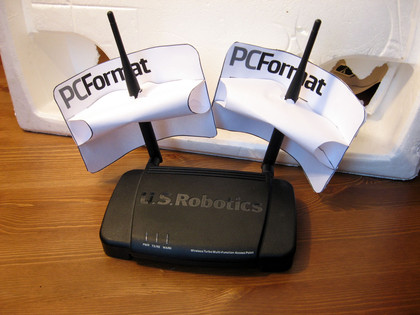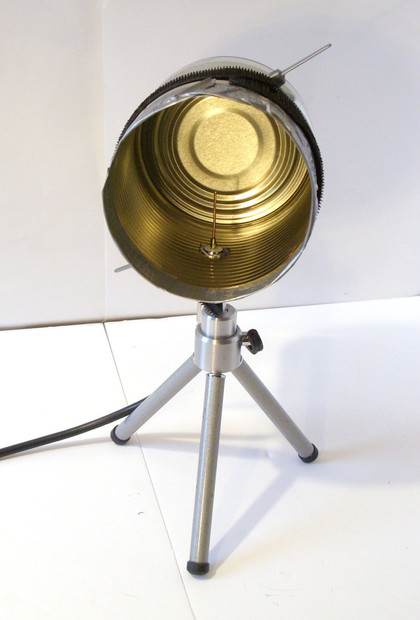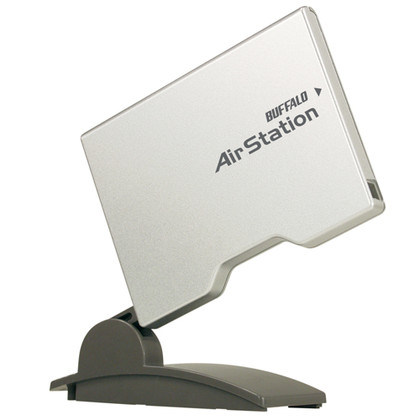6. Angle your dipoles
The antennae that ship with most routers are called dipoles - they produce a circular 'omni' signal in the shape of a 3D doughnut, with the strongest segment of signal on the same plane as the router. This means is you're above or below the router, it's best to angle the antenna towards your position, so they're perpendicular.
7. Make a paper antenna
It's been around for years but we love this. The geniuses at freeantennas.com have a paper-craft template for a directional parabolic antenna. Just print it out and with some scissors and glue you'll soon have a signal booster for your router or adaptor.
We found putting a USB adaptor in the centre worked, as well as mounted on a dipole antenna. It's cheap, easy, doesn't require any modification to your hardware and works.

8. Make a cantenna
The paper antenna is a great quick-fix but surely something involving maths and metal would do a better job? Well, you're right - enter the cantenna, made from a 10cm diameter smooth can it hugely boost your reception.
Get daily insight, inspiration and deals in your inbox
Sign up for breaking news, reviews, opinion, top tech deals, and more.
The maths bit is that a 31mm copper antenna is installed 44mm from the sealed end for optimal signal strength. This site has a calculator for different size. The main problem is you need to buy or build a 'pigtail' connector, so you can connect it to the reverse polarity SMA connector used by routers and adaptors.

9. Get a high-gain antenna
If all of that man-crafting sounds like too much like hard work, splash out on a directional or high-gain antenna. These are designed to push the power output closer to the 20dB EU legal limit, usually from 2dBi up to 7dBi.
Great for you, not so great for any Wi-Fi neighbours, as it increases interference. An increase of 3dBi equates to a doubling in output power. If you're using 5GHz equipment you'll need compatible antennas, as most are designed for 2.4GHz equipment.

10. Update firmware and drivers
It's an oldie but goodie. At this stage all wireless kit should offer good interoperability without real issues. But in the past we have had serious connection issues fixed by either a router firmware update or adaptor driver update. So if you're buying older adaptors or routers this might be the case. It's similar to the advice about buying equipment form the same manufacturer, although thankfully this is less of an issue today.
- 1
- 2
Current page: Five more ways to boost your Wi-Fi coverage
Prev Page How to boost your Wi-Fi coverage